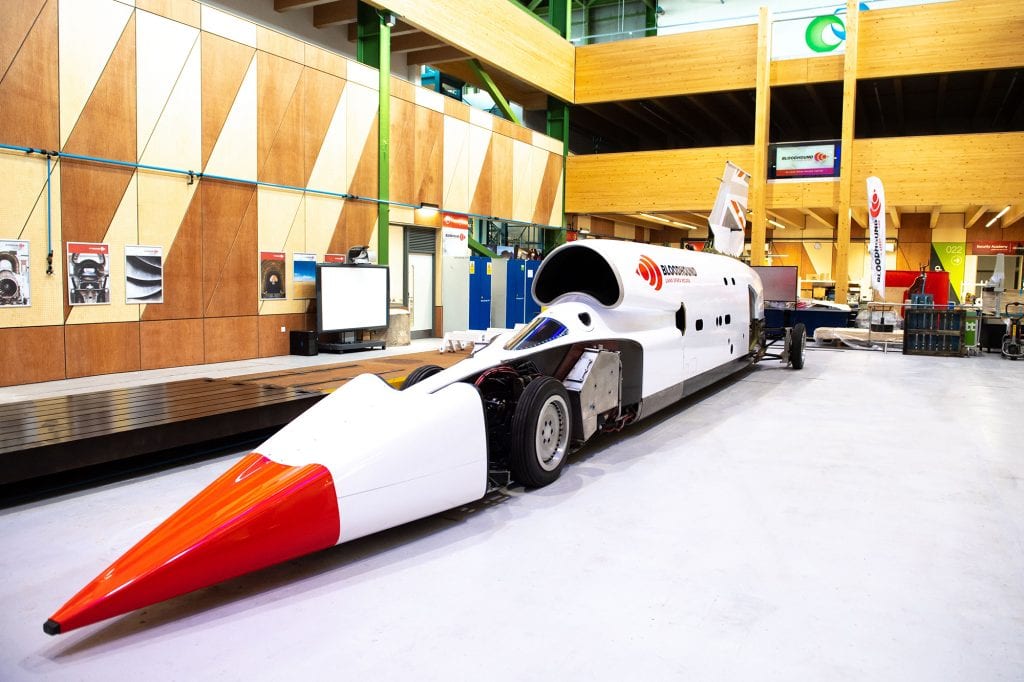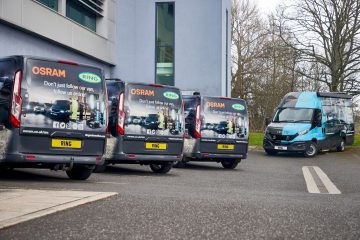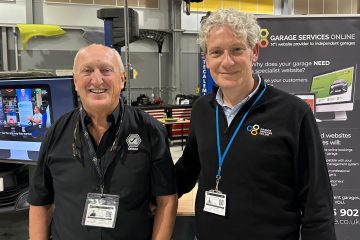
The Bloodhound Land Speed Record project has announced its plans to run for the first time on its dry lake bed race track at Hakskeen Pan, Northern Cape, South Africa, in October 2019.
Following successful 200mph UK runway trials at Cornwall Airport Newquay in October 2017, the team will be targeting 500mph, a key milestone on the journey to setting a new world land speed record.
Since the Bloodhound project’s relaunch in March 2019, following its acquisition from administration by Ian Warhurst the Bloodhound LSR team have been firmly back on the trail of a world land speed record. Under the new ownership of Ian Warhurst, CEO of Grafton LSR, the freshly assembled Bloodhound LSR team have focussed on both the logistics of deploying the team and car to a remote corner of the Kalahari Desert and converting the car from its runway design to high speed testing spec. This has included adding the parachute braking system, uprating springs and dampers, adding more air pressure and load sensors, and a fire detection and suppression system.
The Bloodhound LSR team’s attempt on the world land speed record is the first in the digital era, with digital platforms sharing the data from hundreds of sensors in real time to allow budding engineers to see exactly how the car is behaving as it dices with physics. The high speed trials in October will enable the Bloodhound LSR team to test the live video stream at high speeds, in preparation for the land speed record runs, currently scheduled for late 2020.
“I’m thrilled that we can announce Bloodhound’s first trip to South Africa for these high speed testing runs,” commented Warhurst. “This world land speed record campaign is unlike any other, with the opportunities opened up by digital technology that enabled the team to test the car’s design using computational fluid dynamics (CFD) and that will allow us to gather and share data about the car’s performance in real time. In addition, we’re running the car on a brand new surface. The wheels have been designed specifically for this desert lake bed, but it will still be vital to test them at high speeds before making record speed runs.”
High speed testing using the car’s Rolls-Royce jet engine will test the car’s performance and handling during one of its most vulnerable phases: the stage between 300 and 500mph where the stability of the car transitions from being governed by the interaction of the wheels with the desert surface to being controlled by the vehicle’s aerodynamics.
During low speed trials in 2017, driver Andy Green, the current World Land Speed Record holder, drove the previously blue and orange liveried car from a standing start to 200mph in 8 seconds.
“High speed testing is a key part of setting a new world land speed record,” adds Green. “Building on everything we achieved in Newquay in 2017, we’ll learn a tremendous amount by going fast on the desert the Car was designed to run on. This is where science meets reality and it all starts to get really exciting!”
This phase of the Bloodhound LSR project will be funded through sponsorship and partnerships, with cash flow supported by Warhurst. Sponsorship opportunities include title and livery sponsorship for the first time.




You must be logged in to post a comment.